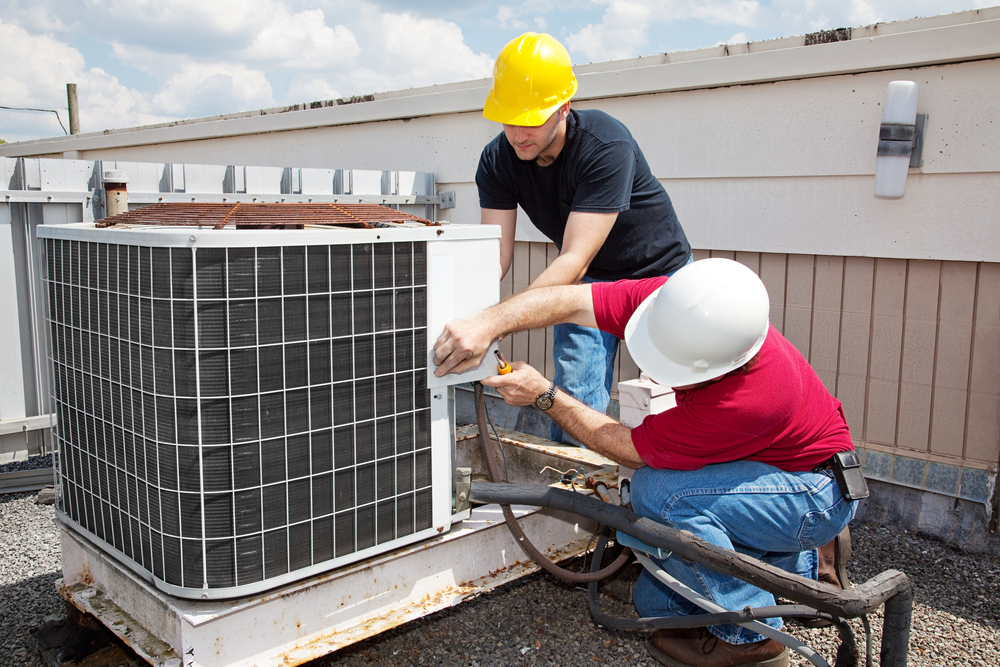HVAC
Heating, Ventilation, and Air-Conditioner systems, (simply referred to as HVAC) only require updating when absolutely necessary. For instance, parts may fail due to old age or poor maintenance. You should inspect your Commercial HVAC system on a semi-regular basis to check for any weakness in materials. Any failures during an official inspection will cause warrant for replacement. With correct care, a building’s heating system whether it consists of a furnace, boiler or heat pump can last for many years.
The main cause of breakage within the HVAC system is the air conditioning system. This is especially applicable to rooftop units. Rooftop units are especially susceptible to damages from dust, debris, and hail in certain parts of the United States. Air conditioners are designed so that air can flow over fins, through the conditioner coil. If the fins are damaged, the cool air struggles to easily flow to the coil. A very slight damage to the fins won’t garner replacing, but when the damage becomes mighty enough to restrict air flow, they will need to be taken care to keep a solid air flow. If this issue is not taken care of, your system won’t run as efficiently, causing the cost of operation to rise, or the system will shut down completely.
To protect outdoor HVAC systems, a homeowner should consider installing a hail guard to place around their system to protect from hail and other debris such as fallen branches from any damage. While hail guards are a good method for damage protection to your system, keep in mind that new problems can come from having one over your system. Certain examples include the restriction of airflow, and the retaining of certain organic materials such as seeds, insects, and leaves. To solve any future problem, you should buy air intake filters that have effective hail protection with air filtering technology. These products are specifically appropriate for high-velocity and high-volume systems.
Roofing Systems
There’s a lot more to commercial roofing systems than would think. There’s a litany of concealed problems that are pivotal to prevent in order to keep the roofing system intact. Due to being constructed from a variety of materials and constant exposure to the elements, monitoring the condition of the roofing system requires a formidable effort from the homeowner. In most cases, a roof is expected to last 15 to 30 years, while some have warranties that can last 30 to 40 years.
Some factors that can lead to a damaged roof include aging, extreme heat, cold, or accumulation. For instance, a lot of melted snow on a roof can cause a lot of left over water which can seep in. This particular situation is known as ponding. Also, homeowners should keep an eye on debris, which can clog drains and damage roof coverings.
Homeowners should also be aware of what type of roofing systems so they can know what kind damage their roof is susceptible to. Low-Slope roofs are subject to tearing from age. Also the ballast, which protects the roof, can be damaged by high winds. Metal panel roofs can face problems with accumulated moisture. The protective finish must be re-done about every 40 years. Asphalt shingles can become exposed to cracking and rotting, and wood shingles can dampen easily and be exposed to mold and mildew. Clay tiles, while normally sturdy, can be removed by harsh weather.
Hopefully this information has been helpful to you, and if you have any questions or any work that needs to be done regarding your commercial or residential HVAC or roofing system, don’t hesitate to contact us.

